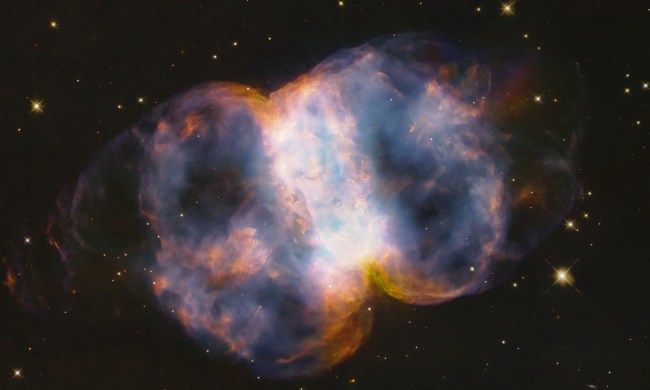A new image captured by the Hubble Space Telescope shows the galaxy NGC 2442, which has a distinctive and unusual shape formed when it was the site of a massive supernova explosion.
Identified by astronomers in March 2015, the supernova SN2015F resulted from the explosion of a white dwarf star, which was part of a binary system, in which two stars orbit around the same point. As the white dwarf reached the end of its life, it pulled matter away from its companion star, and eventually pulled in so much matter that it triggered an absolutely enormous supernova.

“SN2015F was spotted in March 2015 in the galaxy named NGC 2442, nicknamed the Meathook Galaxy owing to its extremely asymmetrical and irregular shape,” the Hubble scientists said in a statement sharing the new image. “The supernova shone brightly for quite some time and was easily visible from Earth through even a small telescope until later that summer. ”
A Type Ia supernova like SN2015F happens when a star, like the white dwarf in NGC 2442, is part of a binary system along with another star that orbits relatively close to the white dwarf. The white dwarf siphons material in the form of gas off its companion with the force of gravity, sucking up this extra matter and incorporating it into its own mass. As it sucks up more and more gas, the white dwarf experiences more and more pressure and is compressed by the forces of gravity.
Eventually, this accumulation of matter and increasing compression reaches a critical mass and sets off a chain reaction. Nuclear fusion of carbon and oxygen happens in a runaway manner and very quickly releases a tremendous amount of energy, sending an enormous shock wave hurtling through space in all directions.
Supernovae can leave behind a huge cloud of dust and gas, called a supernova remnant, and either a neutron star or, if the original star was large enough at about five times the mass of our sun, it may instead leave behind a black hole where the star once was.



